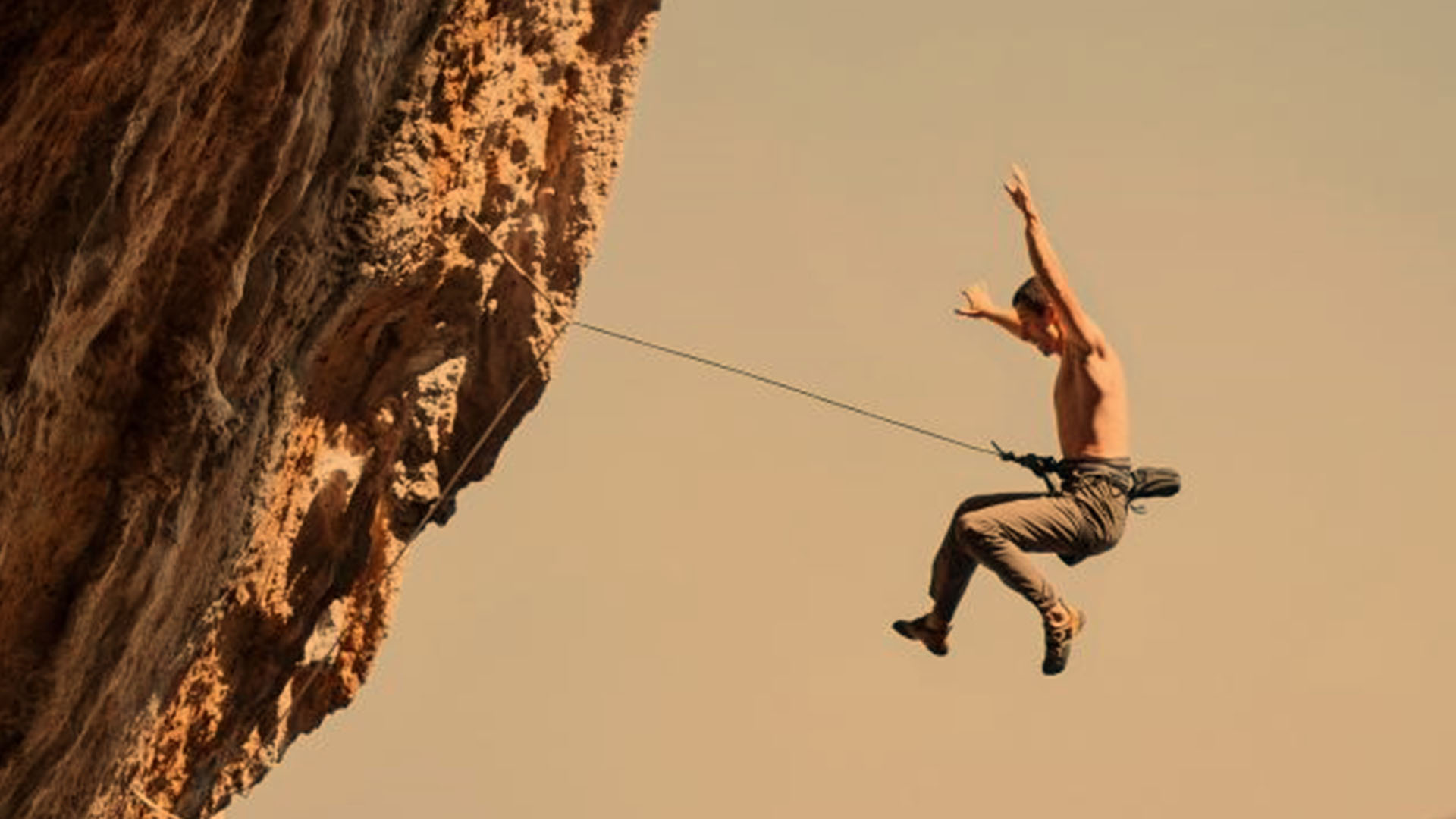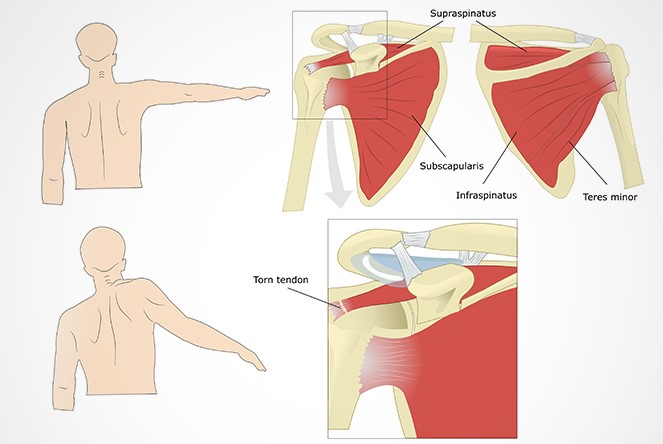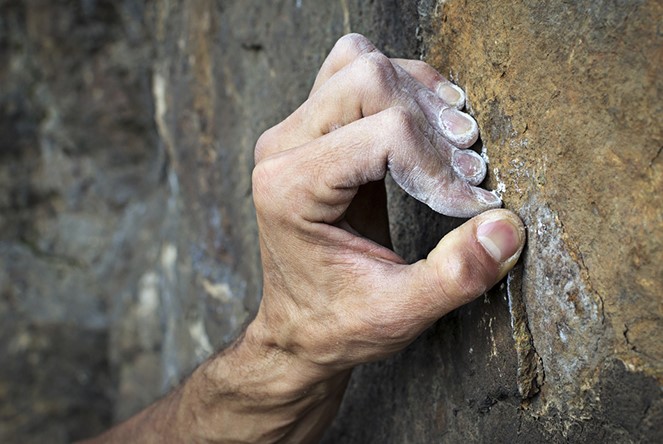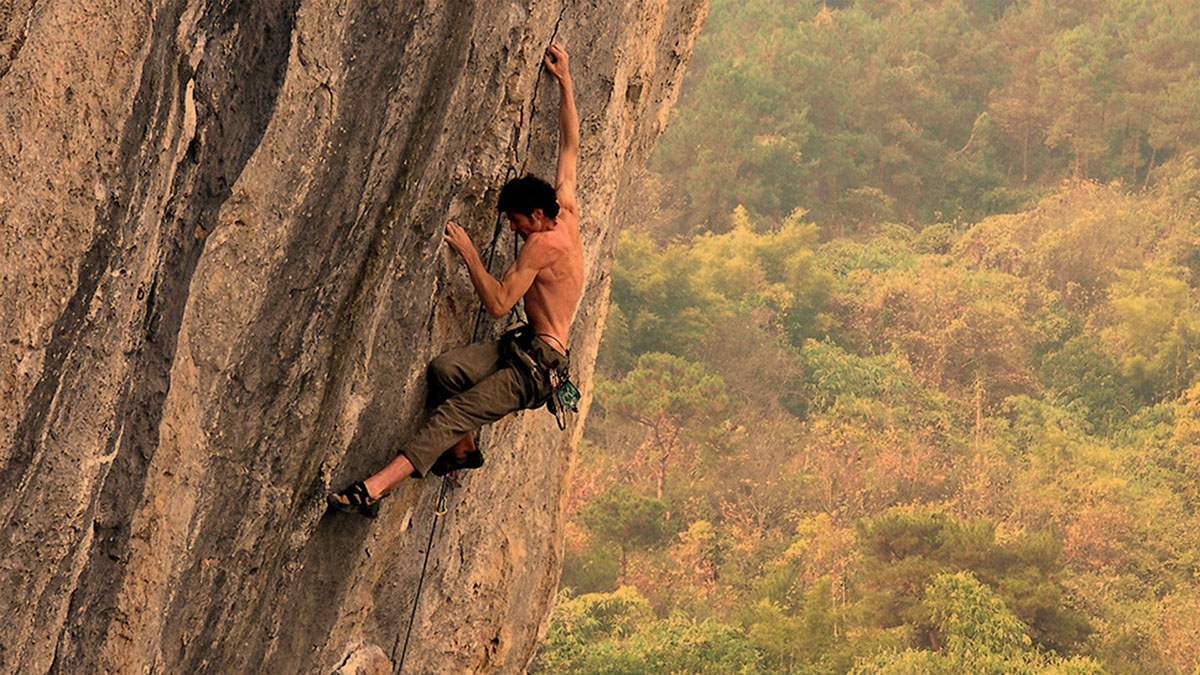
Leave No Trace Climbing Ethics
April 12, 2018
Most Common Climbing Injuries
July 6, 2018Every climber can tell you that scrapes and bruises are just part of the game, but if you’re not careful you could end up suffering something a lot worse than a nick. Here are some common climbing injuries and how to prevent them, or heal them if you’ve already got ‘em.
SUBLUXATION
One of the most common injuries among climbers is subluxation, otherwise known as a partial dislocation, and it occurs mostly in the shoulders. It happens a lot in bouldering and occurs when the ball joint extends too far forward during big moves. It leaves the climber with a searing pain in the back of the shoulder and requires extensive therapy and conditioning to correct.
Upward motions become impossible to perform without discomfort or pain and should be avoided at all costs. That means absolutely no climbing for a while.
Gentle rotations of the shoulder will help stretch the injured muscles while moves like pushups and dips will increase strength over time. Truthfully, this one usually requires professional help and you should consider speaking with a physical therapist if subluxation occurs. Absolutely no climbing as long as the pain still exists, unfortunately.
ROTATOR CUFF TEARS
Sometimes you might tear the muscles in your shoulder rather than dislocate them. In fact, this is the most common shoulder injury among rock climbers. Whenever we place our arms above our shoulders and attempt to perform extensive or dynamic moves we place unnecessary stress on our tendons.
Rotator cuff tears are evident by aching and sharp pains on the top of the shoulder and upper arms, especially when attempting to lift your arms above your head. Your arms and shoulder are likely to feel weak and difficult to lift too.

To heal minor tears you’ll simply need to rest and avoid any movements that place your arms above your head. With time, and a few ice packs, the tear will heal on its own. Major injuries to the rotary cuff are not so simple and often require medical treatment from a doctor and physical therapy to heal. If you mess yourself up badly enough it might require surgery.
So, as soon as you feel pain in your shoulder or arm immediately stop climbing and keep your arm below shoulder-level. If the pain lasts more than a few days consult your doctor. You might want to keep an ice wrap on hand, just in case.
Stretching the muscles in your shoulder is the most effective way to prevent rotator cuff tears. To increase strength, focus on internal and external rotations on a cable machine. You can also try something called a scaption, which involves using the cable machine and lifting your arms upwards at a 30 degree angle similar to a lateral shoulder fly.
PULLEY TEARS
Finger pulleys are ligaments that compress the finger flexor tendons onto our bones in our fingers. Pulleys are highly susceptible to tears during climbing because of the massive amounts of weight we require them to carry. They tend to tear the most when performing too much crimping or when utilizing finger pockets.
If you experience a pulley injury it’s time to take a break. Apply ice and down some anti-inflammatory medicine to reduce the chance of any secondary damage due to lack of oxygen reaching the muscles. It’s best to take at least a week off from training but, if you can’t stomach the thought, give it at least two days and only stick to jugs and other big holds. It’s important to keep the pressure off your fingers until they’re fully healed.
To prevent injury, before or after you’ve already mucked it up once, focus on increasing your crimp strength and ensuring that each finger is strong enough to handle your load.

TENDONITIS
As climbers we spend an inordinate amount of time pulling on muscles instead of pushing on them, which invariably leads to inflamed tendons, or tendonitis. It most often affects shoulders, elbows and forearms but can affect other areas too.
Treating tendonitis involves a lot of ice and a lot less climbing, unfortunately. Apply ice to your injured muscles at least three times a day and avoid any climbing-specific training for a few weeks.
The key to combating tendonitis, as with most things, is stretching. You’ll need to focus on conditioning your forearms and shoulder muscles and increasing the strength the each to prevent climber’s elbow and a jacked up back. Perform extensor and flexor stretches before you hit the wall every time. You’ll also want to increase grip and forearm strength by performing pronators, while pec flys can actually help increase shoulder strength and rotation.
TRIGGER-FINGER SYNDROME
Have you ever come off a hard day’s climb only to find that your finger seems to either lock up occasionally or “pop?” That’s called trigger-finger syndrome and it’s actually the result of a cyst that forms inside the flexor tendons in your finger. It’s not typically painful, but can definitely hamper your ability to grip.
Bad news—it turns out there’s little you can do outside of acupuncture (and that’s not even proven to work) to make it stop. The cyst will have to work its way out on its own. Luckily trigger-finger typically doesn’t hamper your ability to climb, it just feels weird, so no need to worry too much about it. If you’re experiencing actual pain from this you’ll want to see a doctor, though. That’s probably some other problem entirely.




